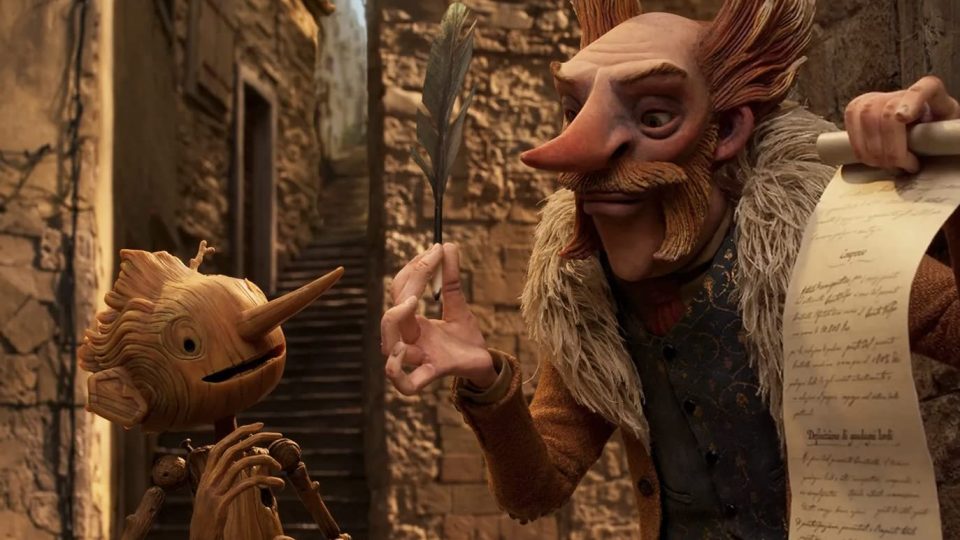
How Pinocchio, the long-nosed puppet boy, has journeyed across time
Ahead of the Dec 9 Netflix release of the stop-motion musical based on the Italian classic, The Federal traces the journey of the marionette who magically turns into a boy

“Once upon a time, there was … ‘A king!’ my little readers will say at once. No, children, you’re wrong. Once upon a time there was a piece of wood.” This is how Tuscan writer Carlo Lorenzini (1826-1890), who published under the pen name Carlo Collodi, begins The Adventures of Pinocchio — the first Italian fantasy novel, starring the much-loved character of children’s literature, the long-nosed marionette who magically turns into a boy.
Children’s fantasy fiction today has come to be the preserve of the likes of modern-day writers like Neil Gaiman, JK Rowling, Rick Riordan and scores of others, but the classic fable continues to fascinate children and adults alike a century-and-a-half after it was first published over several months (between 1881 and 1883) in Giornale dei bambini (‘Children’s Magazine’), which was popular in the 19th-century Italy.
The story of a sentient puppet carved out of a piece of wood, who longs to become a real boy, continues to enjoy a protean afterlife and has been discovered and rediscovered by generations of readers and cinephiles over the decades. Pinocchio is part of both the global popular culture and the literary high culture; a contemporary archetype, he continues to be among the most recognizable literary characters.
Also read: ‘Qala’ review: A sensual mood piece, a strange little psychological puzzle
The morality tale, translated into nearly every language in the world, has spawned countless Pinocchio puppets, toys, statues, cartoons and whatnots. The many mischiefs and misadventures of the puppet-boy whose nose grows when he lies and who is ultimately rewarded for his good deeds have charmed children as much as other characters that populate the story: the woodshop owner Geppetto, the Fairy with Turquoise Hair, Jimmy the Talking Cricket (Pinocchio’s assigned conscience), the Fox, the Cat, Mangiafuoco, and others.
There have also been several reworkings of Pinocchio in films: some have retained the dark material of the original source, but most versions have been bowdlerized and anodyne. 2022 saw both Disney and Netflix release their separate Pinocchio movies. Disney’s live-action version, a remake of its 1940 adaptation that stays true to the classic original, released on September 8.
The film marked the collaboration between Academy-award winning director Robert Zemeckis and Tom Hanks, after films like Forrest Gump (1994) and Cast Away (2000). However, despite Hanks doing his best as Geppetto, the film is, by and large, soulless: it lacks the fizz and it’s no wonder that it fizzled.
Mexican maverick Guillermo del Toro’s Pinocchio, which released in select cinemas on November 9 and will stream on Netflix from December 9, is the real deal, I wager. If Zemeckis’s film has done injustice to the sense of wonderment associated with the tale, undoing what the Walt Disney’s 1940 iconic animated version had done — make the mischievous marionette a part of the cinematic consciousness of people around the world — del Toro’s dark stop-motion animation, co-directed by Mark Gustafson, redeems it.
A mockery of Fascism
Set in Fascist Italy (1922-1943), del Toro’s first animated feature makes a radical departure from the original tale. In the subversive retelling he revels in, he transforms Pinocchio from the lovable wooden boy of Disney films to a (temporary) boy soldier, who is Geppetto’s ‘real’ son and is recruited into a military camp in a village in pre-World War II Italy because the fascist official who controls the area thinks the puppet, which cannot die, would make the perfect soldier.
Also read: Tamil writer Imayam on female desire and why writing is a political activity
Several versions of Pinocchio, including Disney’s 1940 adaptation and the latest one with Tom Hanks, occur in a dreamlike-world, del Toro has chosen to root the story in reality. His whimsical tale unfolds “in an environment in which citizens behave with obedient, almost puppet-like faithfulness,” del Toro said in an interview.
Del Toro aims to draw connections between Pinocchio and the monster in Mary Shelley’s Frankenstein. “They are both about a child that is thrown into the world. They are both created by a father who then expects them to figure out what’s good, what’s bad, the ethics, the morals, love, life, and essentials, on their own. I think that was, for me, childhood. You had to figure it out with your very limited experience,” del Toro told Vanity Fair.
The Shape of Water (2017) director uses stop-motion animation, a style which is marked by lurching motion and exaggerations of character traits, to execute his outlandish and unnerving take. The implicit creepiness endemic to the animation style evokes the darkness of the original fable. It is similar to what Italian filmmaker Matteo Garrone did with his 2019 adaptation even though both these versions differ significantly.
The tale of Pinocchio the puppet, which we discover only as adults, is much more complex than a simplistic story that teaches us about the rewards of conformity and obedience. It addresses larger questions like to what end we human beings are created and what shapes us.

